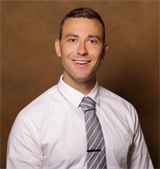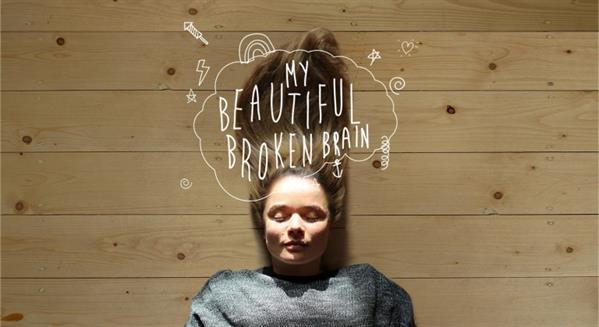My Beautiful Broken Brain
 Dustin Anderson, MD
Dustin Anderson, MD
PGY2, University of Colorado
“Where is Lotje?”
That is the central question of Lotje Sodderland’s contemplative journey in My Beautiful Broken Brain, a documentary film that uniquely catalogues a young woman’s recovery from a hemorrhagic stroke.
“It is extremely strange, starting from nothing.”
The story begins with a mysterious young woman stumbling into a hotel and collapsing in the bathroom. It was at the local hospital where they discovered she was suffering from a hemorrhagic stroke secondary to a ruptured aneurysm. Upon regaining consciousness, she starts to realize the depth of her cognitive deficits.
“I’m obsessed with recording everything,
and I can’t remember anything.”
Stemming from her background in the London movie industry, Lotje almost immediately began filming herself, partly to update and entertain friends, partly as a coping mechanism, and eventually to chronicle her voyage of recovery. The bedrock of the film is video journals that explore her consciousness, buoyed by native footage and creative devices that duplicate a point-of-view perspective of life after a stroke.
“It’s like a new dimension, an exquisite painful nightmare place inside my head. But I can get lost in this beautiful and extraordinary place and I can discover where my brain once was. I’d like to share it with you, because I think you’ll like it.”
The film uses special effects to simulate the perceptual disturbances that accompany post-stroke recovery and give us a window into her experience. Before our very eyes, words become word salad on paper, the camera veers in and out of focus, certain sounds are intensified, others muted, and sepia filters coupled with blurred focus reproduce hemineglect.
Time is explored. In one iconic scene, Lotje looms like a slow motion statue in the kitchen while her family and friends buzz around her at warp speed. This gives us a raw sense of the isolation and overstimulation that often afflicts those with cognitive deficits.
“It’s hugely confrontational, because unless you challenge the boundaries of what people can do, they won’t improve.”
The film follows her as she enters the regional neurologic rehabilitation center for a 3-month stay. The quote above comes from a powerful scene with Lotje and her speech pathologist, which captures her apraxia and her word-finding difficulties, and the despair that results from her cognizance of those deficits. She meticulously documents her thoughts, but the symbols scramble and disappear like invisible ink as they dry.
“The other one was a comfortable illusion,
this one is an uncomfortable reality.”
After rehabilitation, she begins to acclimate to life outside of the hospital, and separate from what she calls the dream world inside her mind. In search of furthering her abilities, she signs up for a study on transmagnetic stimulation.
“And when I’ve done this fabled therapy, I’ll be able to read, maybe…
The cognition certainly seems to be improving,
but what do I know, I’m just an innocent…guinea pig.”
She joins the study, where they give her memory and speech tasks while sending electric currents through her brain. She seems to be improving, until one day she has a major setback, an epileptic seizure. She sees phantom objects, brighter colors in her visual field, and hallucinogenic distortions that crowd her vision. Her recovery stalls. She is pulled out of the study, and the film briefly explores the ethical considerations of excluding those with hemorrhagic strokes. As Lotje wonders, does her seizure preclude the potential benefits from being generalized to other people like her?
“If I’m faced with a question, who am I?
I’m someone who has a huge amount of friends, very hard working, travels all over the world, loves to read,
what if all of that evidence is removed,
what does that make me?”
Ultimately, the film is an exploration of the self and its relation to cognition. Lotje used the medium of film to help cope with the difficulties brought on by her stroke. As rehabilitation specialists, we are uniquely positioned to help our patients adapt to new realities brought on by medical illness. We have a special role to foster novel, positive identities.
The film offers a treasured experience for us, to live vicariously through someone who was open enough to share an extremely personal and challenging journey. I recommend this film as an entertaining story, but also as a tool to walk a mile in our patients’ shoes, and see things as they see it, as they struggle with their beautiful, and sometimes broken brains.
